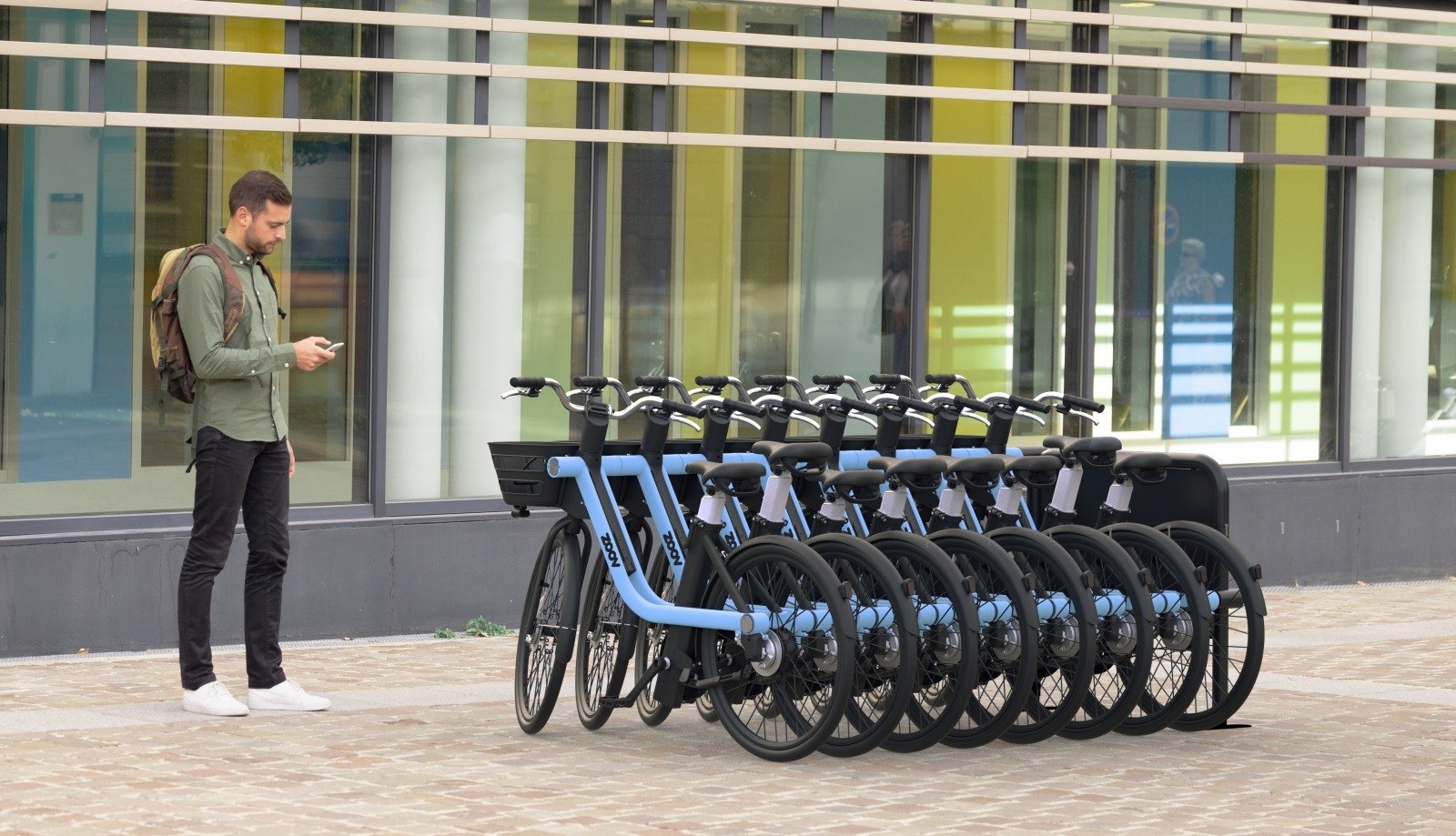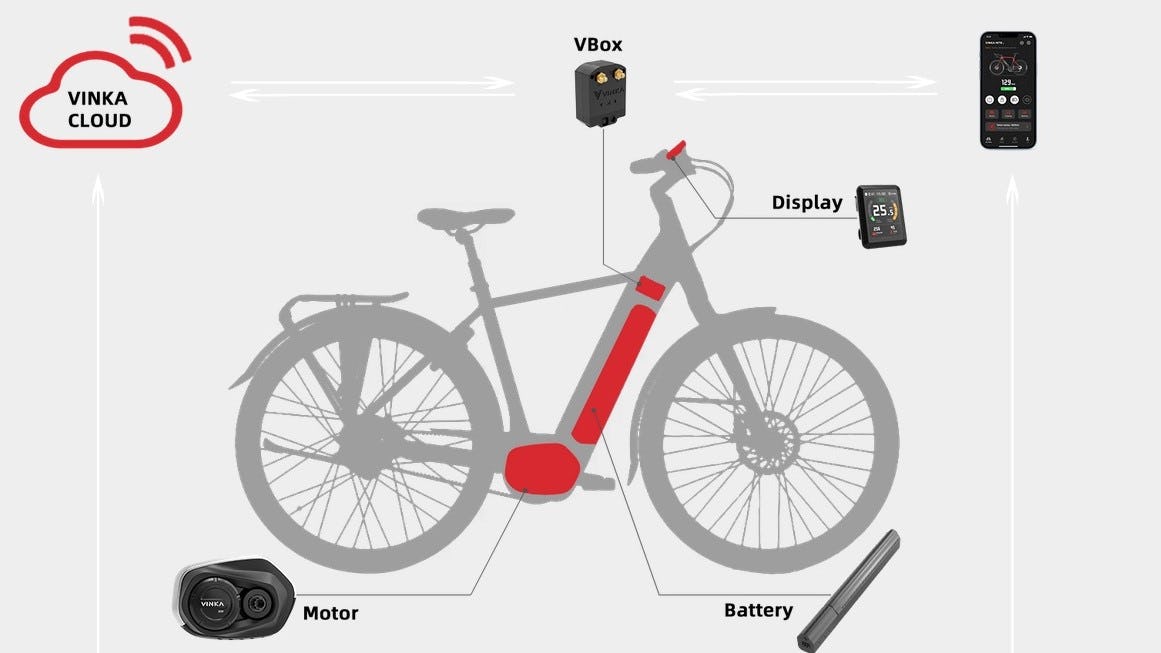The Role of Artificial Intelligence in eBike Sharing Services
Artificial Intelligence (AI) has emerged as a transformative technology, reshaping various industries, including transportation and shared mobility. eBike sharing services, in particular, have much to gain from AI integration. By leveraging AI, these services can improve efficiency, enhance safety, and elevate user experience. This article delves into the impact of AI on eBike sharing services and highlights its potential to revolutionize the industry.
AI can streamline eBike sharing operations by analyzing vast amounts of data and identifying patterns that might be overlooked by human operators. For instance, AI-powered demand prediction algorithms can anticipate user needs more accurately, enabling operators to optimize bike availability and reduce maintenance costs. Furthermore, AI-driven bike redistribution strategies can ensure that eBikes are strategically placed in high-demand areas, thereby improving service quality and customer satisfaction.
In terms of safety, AI can help prevent accidents and mitigate risks by monitoring eBike usage patterns and identifying potential hazards. For example, AI-powered systems can detect if a user is riding recklessly or operating the eBike in an unsafe manner, triggering alerts or interventions to ensure safety. Additionally, AI can facilitate real-time communication between eBikes and infrastructure, enabling features such as advanced warning systems for pedestrians and other road users.
User experience is another area where AI can significantly contribute to eBike sharing services. AI-driven personalized recommendations can help users discover new routes, explore local attractions, and make the most of their eBike sharing experience. Furthermore, AI-powered smart locks and mobile app integrations can simplify the rental process, making it more convenient and user-friendly. By incorporating AI-powered features, eBike sharing services can differentiate themselves from competitors and build a loyal user base.
In conclusion, AI has the potential to play a pivotal role in the evolution of eBike sharing services. By optimizing operations, enhancing safety, and elevating user experience, AI-enabled eBike sharing services can create a more efficient, secure, and enjoyable transportation solution for urban commuters and recreational users alike.

How AI Transforms eBike Sharing Operations
Artificial Intelligence (AI) has the potential to revolutionize eBike sharing services by optimizing various aspects of their operations. By leveraging AI, operators can enhance efficiency, improve safety, and reduce costs. This article explores how AI can optimize eBike sharing operations, focusing on demand prediction, bike redistribution, and maintenance scheduling.
Demand Prediction
AI-powered demand prediction algorithms can analyze historical and real-time data to anticipate user needs accurately. By examining factors such as weather patterns, time of day, and seasonal trends, AI can help operators determine the optimal number of eBikes required in specific locations. This, in turn, can lead to reduced operational costs, improved service quality, and increased customer satisfaction.
Bike Redistribution
AI can also facilitate efficient bike redistribution strategies by analyzing usage patterns and predicting demand in different areas. By determining where eBikes are most likely to be needed, operators can strategically place bikes in high-demand areas, ensuring that users have easy access to shared eBikes. This can help reduce the number of abandoned or poorly distributed eBikes, leading to a more efficient and user-friendly service.
Maintenance Scheduling
Predictive maintenance scheduling is another area where AI can significantly contribute to eBike sharing services. By monitoring usage patterns and detecting potential issues early, AI-powered systems can predict when maintenance is required, enabling operators to schedule repairs proactively. This can help reduce downtime, extend the lifespan of eBikes, and minimize maintenance costs.
In conclusion, AI can transform eBike sharing operations by optimizing demand prediction, bike redistribution, and maintenance scheduling. By leveraging AI-powered solutions, operators can create a more efficient, cost-effective, and user-friendly service. As AI technology continues to evolve, eBike sharing services can expect further improvements in operational efficiency, safety, and overall user experience.

Enhancing User Experience with AI-Powered Features
Artificial Intelligence (AI) has the potential to significantly improve the user experience in eBike sharing services. By incorporating AI-driven features, operators can offer personalized recommendations, smart locks, and seamless mobile app integrations, among other benefits. This article explores how AI can enhance the user experience in eBike sharing services.
Personalized Recommendations
AI-powered recommendation engines can analyze user behavior, preferences, and riding patterns to provide personalized suggestions. For example, AI can suggest the most convenient eBike station based on a user’s location and past usage patterns. Additionally, AI can recommend eBikes with specific features, such as child seats or baskets, based on a user’s profile and needs. By offering personalized recommendations, operators can create a more user-friendly and convenient service, leading to increased customer satisfaction and loyalty.
Smart Locks
Smart locks integrated with AI technology can enhance security and convenience in eBike sharing services. For instance, AI-powered smart locks can automatically unlock eBikes when a user approaches, eliminating the need for manual unlocking. Furthermore, AI can detect unusual behavior, such as unauthorized access or attempts to tamper with the eBike, and alert operators in real-time. By incorporating smart locks with AI capabilities, operators can improve user experience, security, and operational efficiency.
Mobile App Integrations
AI-powered mobile app integrations can provide users with a seamless and intuitive experience when accessing eBike sharing services. For example, AI can enable voice commands, allowing users to locate nearby eBikes, check availability, and reserve bikes using their voice. Additionally, AI can analyze user feedback and provide operators with insights to improve the app’s functionality and user experience continually.
In conclusion, AI-powered features can significantly enhance the user experience in eBike sharing services. By offering personalized recommendations, smart locks, and seamless mobile app integrations, operators can create a more user-friendly and convenient service. As AI technology continues to evolve, eBike sharing services can expect further improvements in user experience, safety, and overall satisfaction.

Top AI-Enabled eBike Sharing Services to Watch
Artificial Intelligence (AI) has become increasingly important in the eBike sharing industry, offering numerous benefits such as improved efficiency, safety, and user experience. This article highlights some of the leading eBike sharing services that leverage AI technology, providing a brief overview of their unique features and benefits.
Lime
Lime is a popular eBike sharing service that uses AI to optimize its operations. For instance, Lime’s AI-powered demand prediction algorithms analyze various factors, such as weather patterns, events, and historical data, to determine where to deploy eBikes for maximum availability and usage. Additionally, Lime’s AI-driven maintenance scheduling system ensures that eBikes are serviced and maintained in a timely and efficient manner, reducing downtime and improving overall service quality.
Jump Bikes (Uber)
Jump Bikes, acquired by Uber in 2018, is another eBike sharing service that leverages AI technology. Jump Bikes uses AI-powered smart locks that automatically unlock eBikes when a user approaches, providing a seamless and convenient user experience. Furthermore, Jump Bikes’ AI-driven redistribution system optimizes eBike placement based on demand patterns, ensuring that eBikes are available where and when users need them.
Hopr Bike
Hopr Bike is an eBike sharing service that uses AI to provide personalized recommendations and incentives to users. Hopr Bike’s AI-powered recommendation engine suggests eBike routes based on a user’s past riding behavior and preferences, providing a more personalized and convenient user experience. Additionally, Hopr Bike’s AI-driven incentive system rewards users for taking specific actions, such as riding during off-peak hours or using eBikes for longer durations.
Bird Bike
Bird Bike is an eBike sharing service that uses AI to optimize its operations and improve user experience. Bird Bike’s AI-powered demand prediction algorithms analyze various factors, such as weather patterns, events, and historical data, to determine where to deploy eBikes for maximum availability and usage. Additionally, Bird Bike’s AI-driven maintenance scheduling system ensures that eBikes are serviced and maintained in a timely and efficient manner, reducing downtime and improving overall service quality.
In conclusion, AI technology has become increasingly important in the eBike sharing industry, offering numerous benefits such as improved efficiency, safety, and user experience. By leveraging AI, eBike sharing services such as Lime, Jump Bikes, Hopr Bike, and Bird Bike have been able to optimize their operations and provide a more personalized and convenient user experience. As AI technology continues to evolve, we can expect further improvements in the eBike sharing industry, including the development of autonomous eBikes, advanced analytics, and smart city integration.

Considerations for Implementing AI in eBike Sharing Services
Artificial Intelligence (AI) has the potential to revolutionize eBike sharing services, offering numerous benefits such as improved efficiency, safety, and user experience. However, implementing AI in eBike sharing services also presents several challenges and opportunities that operators should consider. This article explores some of the key considerations for implementing AI in eBike sharing services, including data privacy, security, and regulatory compliance.
Data Privacy
Data privacy is a critical consideration for eBike sharing services that leverage AI technology. AI algorithms rely on large amounts of data to make predictions and optimize operations. However, this data can also be sensitive, including personal information such as user location, riding behavior, and payment information. Therefore, eBike sharing services must ensure that they comply with data privacy regulations such as the General Data Protection Regulation (GDPR) and the California Consumer Privacy Act (CCPA). Additionally, eBike sharing services should provide clear and transparent privacy policies to users, explaining how their data is collected, used, and shared.
Security
Security is another critical consideration for eBike sharing services that leverage AI technology. AI algorithms can be vulnerable to cyber attacks, which can result in the theft of sensitive data or the disruption of operations. Therefore, eBike sharing services must ensure that they implement robust security measures to protect their AI systems. This includes measures such as encryption, access controls, and regular security audits. Additionally, eBike sharing services should consider implementing AI-driven security measures, such as anomaly detection and intrusion detection systems, to detect and respond to security threats in real-time.
Regulatory Compliance
Regulatory compliance is a critical consideration for eBike sharing services that leverage AI technology. AI algorithms can be subject to various regulations, such as those related to safety, discrimination, and transparency. Therefore, eBike sharing services must ensure that they comply with these regulations when implementing AI. This includes regulations related to autonomous vehicles, which may apply to autonomous eBikes in the future. Additionally, eBike sharing services should consider working with regulators and policymakers to shape regulations that promote innovation while protecting public safety and privacy.
In conclusion, implementing AI in eBike sharing services presents several challenges and opportunities related to data privacy, security, and regulatory compliance. By addressing these considerations, eBike sharing services can leverage AI technology to improve efficiency, safety, and user experience while ensuring compliance with regulations and protecting user data. As AI technology continues to evolve, eBike sharing services must stay up-to-date with the latest developments and best practices to ensure the safe and effective use of AI in their operations.

Future Perspectives: AI and the Evolution of eBike Sharing
Artificial Intelligence (AI) has the potential to transform eBike sharing services, offering numerous benefits such as improved efficiency, safety, and user experience. As AI technology continues to evolve, eBike sharing services can expect to see new developments and innovations that will further enhance their operations and offerings. In this section, we will discuss the future potential of AI in eBike sharing services, including the development of autonomous eBikes, advanced analytics, and smart city integration.
Autonomous eBikes
One of the most exciting developments in AI for eBike sharing services is the potential for autonomous eBikes. Autonomous eBikes can operate without a human rider, using AI algorithms to navigate roads and avoid obstacles. This technology has the potential to revolutionize eBike sharing services, offering numerous benefits such as increased efficiency, reduced labor costs, and improved safety. For example, autonomous eBikes can be deployed to high-demand areas during peak hours, reducing the need for manual redistribution and ensuring that eBikes are always available when and where they are needed.
Advanced Analytics
AI can also enable advanced analytics in eBike sharing services, providing operators with valuable insights into user behavior, operational efficiency, and maintenance needs. For example, AI algorithms can analyze user data to identify peak usage times, popular routes, and common maintenance issues. This information can be used to optimize operations, improve user experience, and reduce maintenance costs. Additionally, AI-driven predictive maintenance can help eBike sharing services identify and address maintenance issues before they become major problems, reducing downtime and extending the lifespan of eBikes.
Smart City Integration
Finally, AI has the potential to enable smart city integration for eBike sharing services, allowing them to seamlessly integrate with other transportation modes and urban infrastructure. For example, AI algorithms can be used to optimize eBike sharing operations based on real-time traffic data, ensuring that eBikes are always available in the right place at the right time. Additionally, AI-enabled smart locks can be integrated with other smart city systems, such as public transit payment systems, providing users with a seamless and convenient transportation experience.
In conclusion, the future potential of AI in eBike sharing services is vast, offering numerous benefits such as autonomous eBikes, advanced analytics, and smart city integration. As AI technology continues to evolve, eBike sharing services must stay up-to-date with the latest developments and best practices to ensure the safe and effective use of AI in their operations. By embracing the potential of AI, eBike sharing services can enhance their offerings, improve user experience, and contribute to the development of smart cities.

How to Get Started with Artificial Intelligence in eBike Sharing Services
Artificial Intelligence (AI) has the potential to transform eBike sharing services, offering numerous benefits such as improved efficiency, safety, and user experience. However, implementing AI in eBike sharing services can be a complex and challenging process. In this section, we will provide a step-by-step guide for eBike sharing operators looking to implement AI, including tips on selecting the right technology, partnering with AI providers, and measuring success.
Step 1: Define Your Objectives
The first step in implementing AI in eBike sharing services is to define your objectives. What do you hope to achieve with AI? Common objectives for eBike sharing operators include improving operational efficiency, reducing maintenance costs, and enhancing user experience. By defining your objectives, you can ensure that your AI implementation aligns with your business goals and priorities.
Step 2: Assess Your Data Capabilities
AI relies on data to make decisions and optimize operations. Therefore, it is essential to assess your data capabilities before implementing AI. Do you have access to the necessary data? Is your data clean and accurate? Do you have the necessary infrastructure to collect, store, and analyze data? By assessing your data capabilities, you can ensure that you have the necessary foundation to support AI implementation.
Step 3: Select the Right Technology
There are numerous AI technologies available for eBike sharing services, including machine learning, natural language processing, and computer vision. It is essential to select the right technology for your specific needs and objectives. Consider factors such as the complexity of your operations, the size of your fleet, and the level of customization required. By selecting the right technology, you can ensure that your AI implementation is effective and efficient.
Step 4: Partner with AI Providers
Implementing AI in eBike sharing services can be complex and challenging. Therefore, it is often beneficial to partner with AI providers who have expertise and experience in the field. When selecting an AI provider, consider factors such as their track record, their expertise in eBike sharing services, and their ability to customize solutions to meet your specific needs. By partnering with AI providers, you can ensure that your AI implementation is successful and sustainable.
Step 5: Measure Success
Finally, it is essential to measure the success of your AI implementation. Define key performance indicators (KPIs) that align with your objectives, such as operational efficiency, user satisfaction, and maintenance costs. Regularly monitor and analyze your KPIs to ensure that your AI implementation is delivering the desired results. By measuring success, you can continuously improve your AI implementation and ensure that it remains effective and efficient over time.
In conclusion, implementing AI in eBike sharing services can be a complex and challenging process. However, by following these steps, eBike sharing operators can ensure that their AI implementation is effective and efficient. By selecting the right technology, partnering with AI providers, and measuring success, eBike sharing operators can leverage the potential of AI to improve efficiency, safety, and user experience.

Navigating the AI Landscape in eBike Sharing: Best Practices and Lessons Learned
Artificial Intelligence (AI) has the potential to transform eBike sharing services, offering numerous benefits such as improved efficiency, safety, and user experience. However, implementing AI in eBike sharing services can be a complex and challenging process. In this section, we will share best practices and lessons learned from successful AI implementations in eBike sharing services, emphasizing the importance of continuous learning and improvement.
Best Practice 1: Define Clear Objectives
Defining clear objectives is essential for successful AI implementation in eBike sharing services. Objectives should align with the business goals and priorities of the eBike sharing operator. By defining clear objectives, eBike sharing operators can ensure that their AI implementation is effective and efficient, delivering the desired results.
Best Practice 2: Focus on Data Quality
AI relies on data to make decisions and optimize operations. Therefore, it is essential to focus on data quality when implementing AI in eBike sharing services. Ensure that your data is clean, accurate, and relevant to your objectives. By focusing on data quality, eBike sharing operators can ensure that their AI implementation is effective and reliable.
Best Practice 3: Partner with AI Providers
Implementing AI in eBike sharing services can be complex and challenging. Therefore, it is often beneficial to partner with AI providers who have expertise and experience in the field. When selecting an AI provider, consider factors such as their track record, their expertise in eBike sharing services, and their ability to customize solutions to meet your specific needs. By partnering with AI providers, eBike sharing operators can ensure that their AI implementation is successful and sustainable.
Best Practice 4: Continuously Monitor and Improve
Continuous monitoring and improvement are essential for successful AI implementation in eBike sharing services. Regularly monitor and analyze your key performance indicators (KPIs) to ensure that your AI implementation is delivering the desired results. By continuously monitoring and improving your AI implementation, eBike sharing operators can ensure that it remains effective and efficient over time.
Lessons Learned: Data Privacy and Security
Data privacy and security are critical considerations when implementing AI in eBike sharing services. Ensure that you have robust data protection measures in place to protect user data and comply with relevant regulations. By prioritizing data privacy and security, eBike sharing operators can build trust with their users and avoid costly data breaches.
Lessons Learned: Regulatory Compliance
Regulatory compliance is another critical consideration when implementing AI in eBike sharing services. Ensure that you are aware of and comply with all relevant regulations, such as data protection and transportation regulations. By prioritizing regulatory compliance, eBike sharing operators can avoid legal issues and ensure the long-term sustainability of their AI implementation.
In conclusion, implementing AI in eBike sharing services can be a complex and challenging process. However, by following best practices and learning from successful AI implementations, eBike sharing operators can ensure that their AI implementation is effective and efficient. By defining clear objectives, focusing on data quality, partnering with AI providers, and continuously monitoring and improving, eBike sharing operators can leverage the potential of AI to improve efficiency, safety, and user experience.


